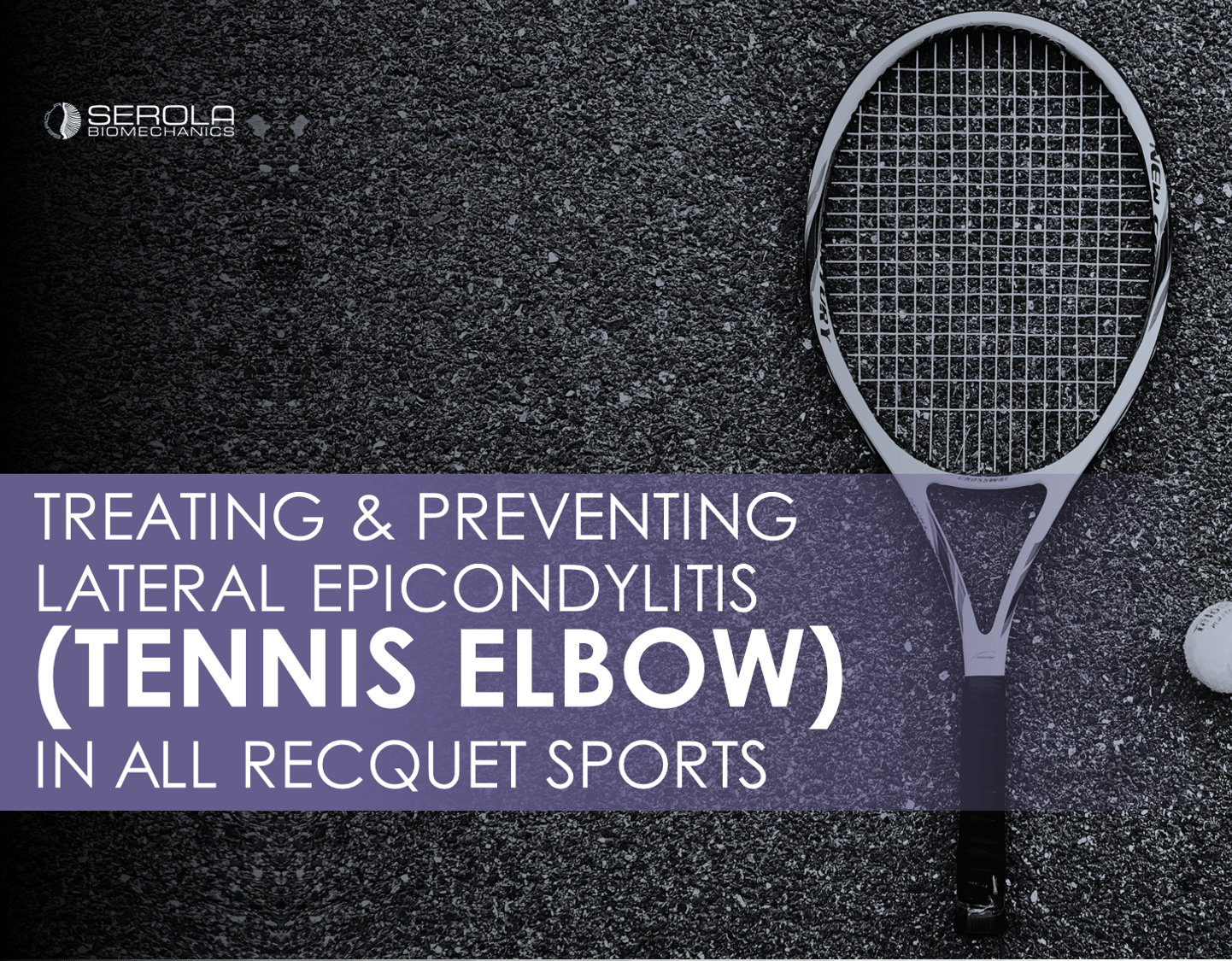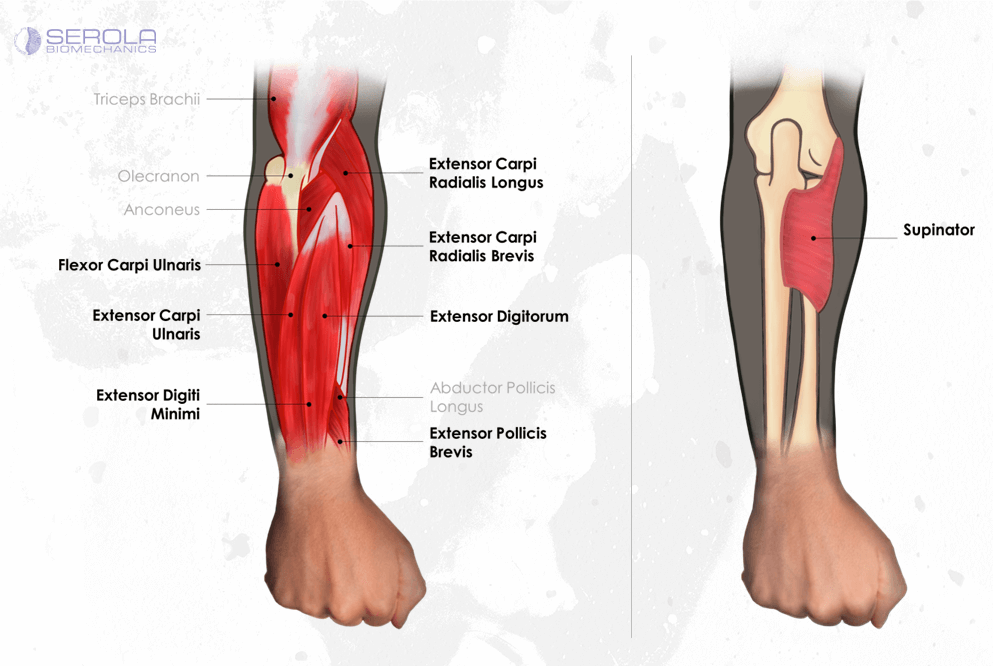Medial & Lateral Epicondylitis: Causes, Treatment & Prevention

With the increasing tendency for young athletes to specialize in one or two sports to achieve higher performance comes the increased likelihood of overuse or repetitive injuries such as epicondylitis. On the other end of the spectrum is the weekend athlete who plays competitive sports without sufficient strengthening or warming up, and suffers muscle and joint injuries.
Epicondylitis Overview
Medial and lateral epicondylitis are both overuse injuries affecting the tendons that connect your forearm muscles to your elbow bone. While they share some similarities, they target different muscle groups and have slightly different symptoms and treatment options.
Medial vs. Lateral Epicondylitis
Both medial and lateral epicondylitis involve overuse injuries to the elbow tendons typically due to playing sports like tennis, golf, pickleball, squash and more. However, the key difference lies in the location of the pain (different sides of the elbow) and the muscles affected:
Medial epicondylitis (golfer’s elbow): Pain occurs on the inner side of the elbow, affecting the muscles that flex your wrist and bend your fingers.
Lateral epicondylitis (tennis elbow): Pain occurs on the outer side of the elbow, affecting the muscles that bend your wrist backward, away from your palms

What is Medial Epicondylitis
Medial epicondylitis, also known as golfer’s elbow, causes pain on the inner side of your elbow. It’s caused by overuse of the muscles that flex your wrist and bend your fingers.
Causes of Medial Epicondylitis
The primary culprit behind medial epicondylitis is repetitive stress on the tendons in the inner forearm. This can be caused by activities like:
- Golfing (especially with improper technique)
- Weightlifting
- Rock climbing
- Repetitive use of tools
Prevention & Treatment for Medial Epicondylitis
Taking proactive steps can help you avoid golfer’s elbow. Here are some tips:
- Proper form: Ensure proper technique when performing activities that involve gripping or forceful wrist flexion.
- Warm-up and cool-down: Always warm up your forearms before exercise and cool down afterward.
- Strengthening exercises: Build strength in your forearm muscles to improve their resilience.
If you experience pain, treatment options for medial epicondylitis may include:
- Rest
- Ice therapy
- Compression
- Anti-inflammatory medication
- Physical therapy
- Utilizing an Elbow Brace
What is Lateral Epicondylitis
Lateral epicondylitis, also known as tennis elbow, causes pain on the outer side of your elbow. It’s caused by overuse of the muscles that extend your wrist and fingers. According to the National Institute of Health, lateral epicondylitis, (tennis elbow) is the second most common injury of the upper limb. Almost half of all tennis players develop lateral epicondylitis (tennis elbow) during their lifetime
Causes of Lateral Epicondylitis
Lateral Epicondylitis, like medial epicondylitis, also occurs from repetitive stress. Specifically, overuse of the wrist extensors and forearm supinators during a backhanded stroke. The shock and vibration that occurs when hitting a ball with a racquet travels up the wrist extensors on the back of the forearm and causes microtrauma at the origin of the muscles where they insert into the lateral epicondyle.
Prevention & Treatment of Lateral Epicondylitis
To best prevent tennis elbow, consider adjusting your form during game play. Double-handed backhand strokes can lower the force on the elbow because it spreads the load transfer between two arms.
Wearing an elbow brace like the Serola Gel Arc Elbow Brace during tennis matches can also help. Our brace offers unique, patented support that absorbs shock and vibration specifically just before the muscles insert into their origin. This significantly reduces both shock and vibration before they reach the epicondyle. Learn more about the top three benefits of using the Serola Gel Arc Elbow Brace.
Lastly, look at ideal racquet usage to support a properly functioning epicondyle and avoid injury.
Best Tennis Racquets for Preventing Tennis Elbow
Heavy Racquet: This allows more power. In general, it is harder to swing but vibrates less, so less force goes to the arm. Be careful not to go too heavy – assess your comfort after a short time playing. Too heavy of a racquet will reduce speed and power.
Balance Point: Consider where the weight of the racquet is split between the head and handle, which determines whether it is head-heavy or head light. Heavy racquet rules apply.
Flexible Racquet Frame: This allows for less power, more control, and vibrates with greater amplitude but absorbs shock better for less force on the arm.
Larger Head Size: In general, it gives more surface area to contact the ball for better rebound and more power, and is more forgiving.
Rubber Handle: This material allows for better flexibility and transfers less force to the arm.
Lower String Tension: This causes less vibration and transfers less force to arm. You’ll have a bit less control, but more power and a higher rebound angle.
Thinner Strings: This spreads the impact of the ball over more surface area to reduce force to arm.
Handle Grip Size: Too small of a grip size requires more muscle strength to keep the racquet from twisting in your hand. Too large presents a biomechanical disadvantage that also requires more muscle strength.
Racquet Length: 27” is standard and 29” is the maximum tennis racquet length allowed in tournament play.
A longer racquet length gives more power and control, with less force to the arm, but the racket becomes harder to swing and slower, with less maneuverability.
Recovery Timeline & Long Term Complications of Epicondylitis
Without proper treatment, both medial and lateral epicondylitis can result in an immediate or frequent recurrence of symptoms upon resuming the activity that caused it in the first place. Recovery may be difficult and, without treatment, may take 1-2 years to heal.
Tennis Elbow Healing Process
In rare cases, surgery may be needed to properly treat and manage epicondylitis. Some unlikely but possible surgical complications may include:
- Elbow bursitis
- Radial nerve entrapment
- Shingles
The typical recovery timeline for both types of epicondylitis is anywhere from 6-12 months with proper and consistent management using the recommendations above.
Manage Medial & Lateral Epicondylitis
Medial and lateral epicondylitis are common yet treatable injuries. By understanding the causes, prevention methods, and treatment options, you can effectively manage these conditions and keep enjoying your favorite racquet sports..
Remember, early diagnosis and proper treatment are crucial for a speedy recovery. Don’t hesitate to consult your doctor if you experience persistent pain in your elbow.

